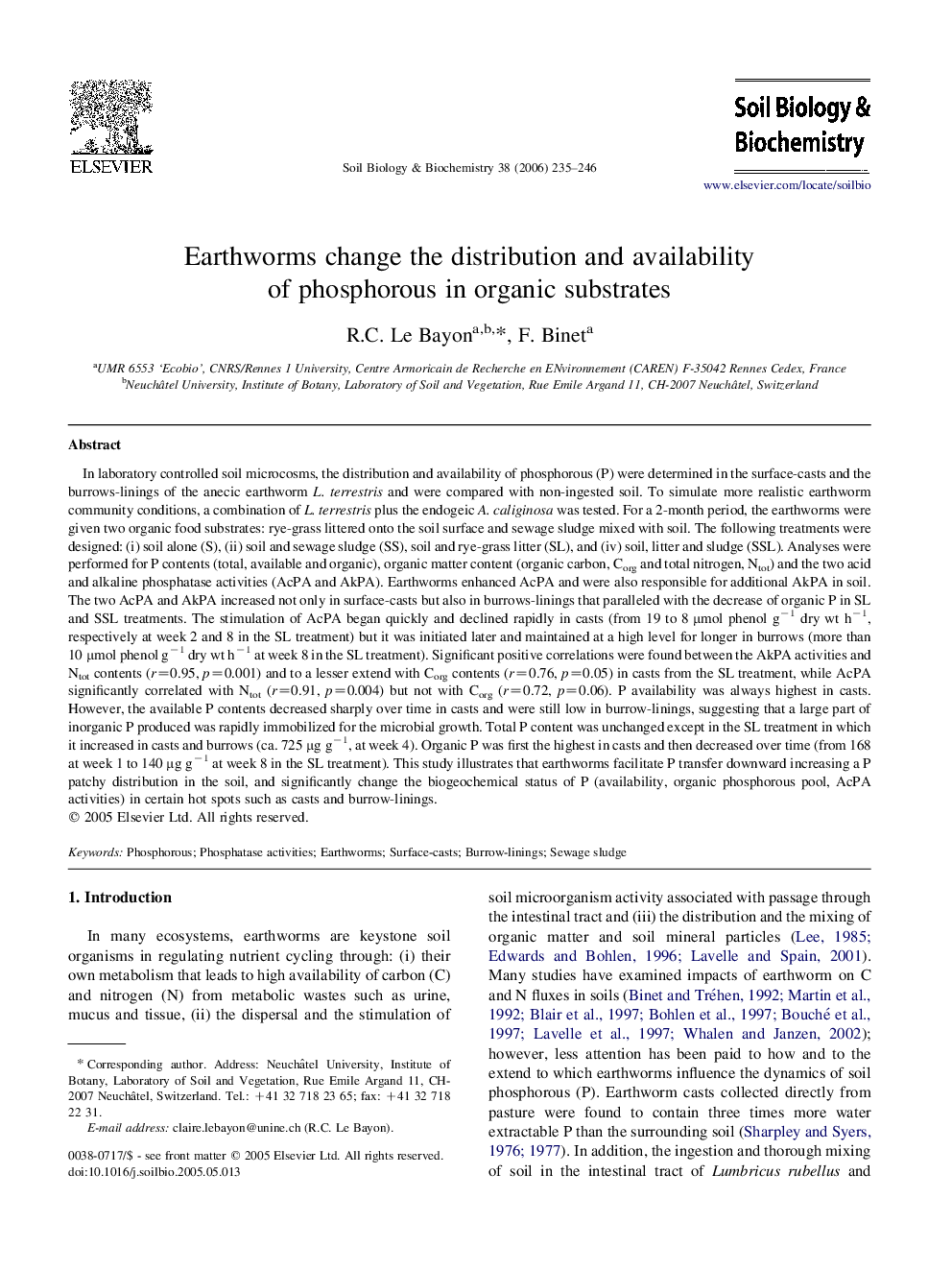| Article ID | Journal | Published Year | Pages | File Type |
|---|---|---|---|---|
| 2026774 | Soil Biology and Biochemistry | 2006 | 12 Pages |
Abstract
In laboratory controlled soil microcosms, the distribution and availability of phosphorous (P) were determined in the surface-casts and the burrows-linings of the anecic earthworm L. terrestris and were compared with non-ingested soil. To simulate more realistic earthworm community conditions, a combination of L. terrestris plus the endogeic A. caliginosa was tested. For a 2-month period, the earthworms were given two organic food substrates: rye-grass littered onto the soil surface and sewage sludge mixed with soil. The following treatments were designed: (i) soil alone (S), (ii) soil and sewage sludge (SS), soil and rye-grass litter (SL), and (iv) soil, litter and sludge (SSL). Analyses were performed for P contents (total, available and organic), organic matter content (organic carbon, Corg and total nitrogen, Ntot) and the two acid and alkaline phosphatase activities (AcPA and AkPA). Earthworms enhanced AcPA and were also responsible for additional AkPA in soil. The two AcPA and AkPA increased not only in surface-casts but also in burrows-linings that paralleled with the decrease of organic P in SL and SSL treatments. The stimulation of AcPA began quickly and declined rapidly in casts (from 19 to 8 μmol phenol gâ1 dry wt hâ1, respectively at week 2 and 8 in the SL treatment) but it was initiated later and maintained at a high level for longer in burrows (more than 10 μmol phenol gâ1 dry wt hâ1 at week 8 in the SL treatment). Significant positive correlations were found between the AkPA activities and Ntot contents (r=0.95, p=0.001) and to a lesser extend with Corg contents (r=0.76, p=0.05) in casts from the SL treatment, while AcPA significantly correlated with Ntot (r=0.91, p=0.004) but not with Corg (r=0.72, p=0.06). P availability was always highest in casts. However, the available P contents decreased sharply over time in casts and were still low in burrow-linings, suggesting that a large part of inorganic P produced was rapidly immobilized for the microbial growth. Total P content was unchanged except in the SL treatment in which it increased in casts and burrows (ca. 725 μg gâ1, at week 4). Organic P was first the highest in casts and then decreased over time (from 168 at week 1 to 140 μg gâ1 at week 8 in the SL treatment). This study illustrates that earthworms facilitate P transfer downward increasing a P patchy distribution in the soil, and significantly change the biogeochemical status of P (availability, organic phosphorous pool, AcPA activities) in certain hot spots such as casts and burrow-linings.
Related Topics
Life Sciences
Agricultural and Biological Sciences
Soil Science
Authors
R.C. Le Bayon, F. Binet,
